OCTOBER 2020: One (or both) of the trees is now growing so vibrantly that its south-facing branches are beginning to encroach on the paved driveway. Below are two photos to show the problem, 2013 on the left and 2019 on the right. Connie Barlow reports that she just talked with Mrs. Bullard via phone, who is receptive to having the tree(s) greatly pruned back from the pavement every year, as an alternative to the other solution: cutting them down. We hope a favorable report will follow here, if a pruner can be located October or November 2020.
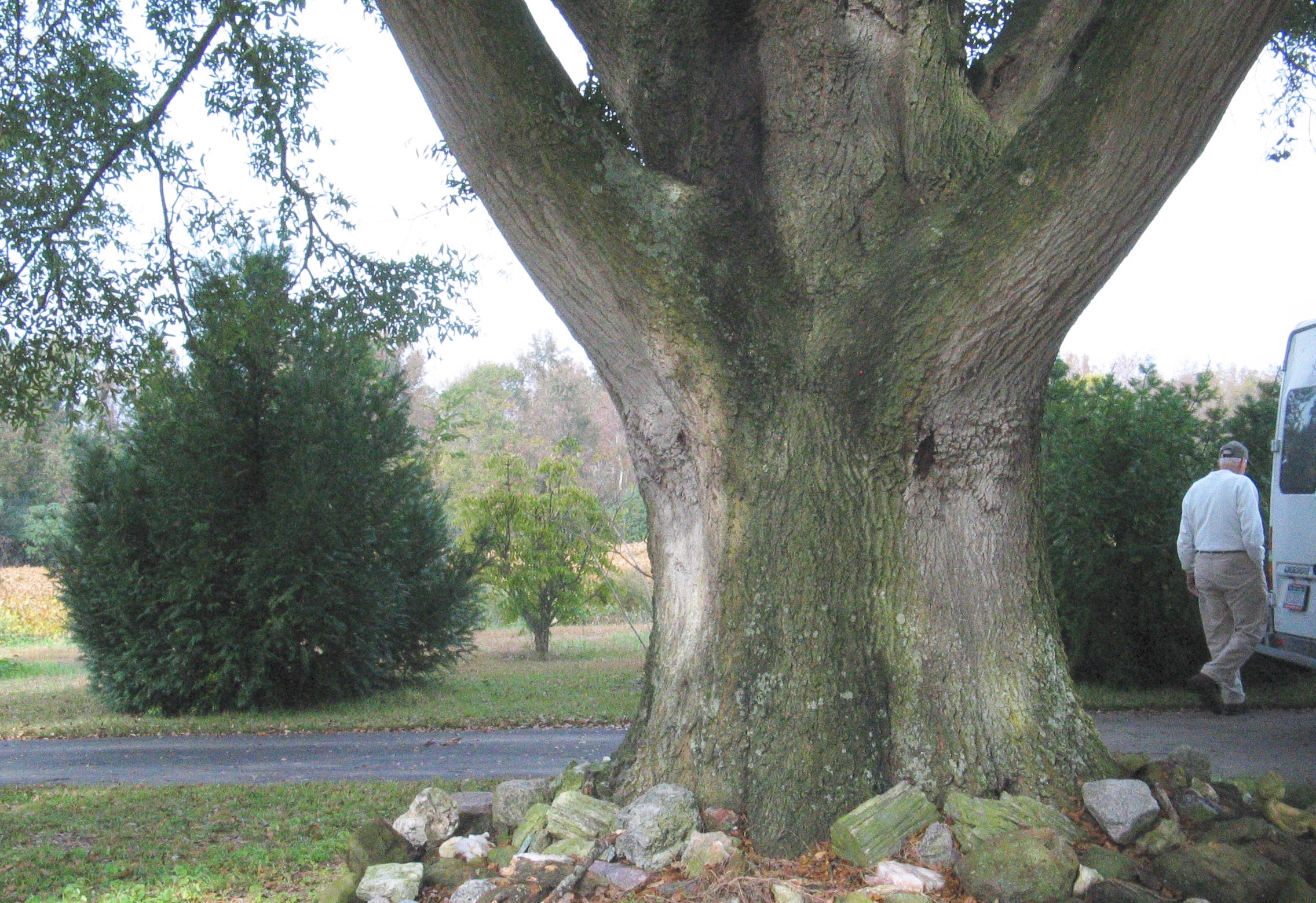
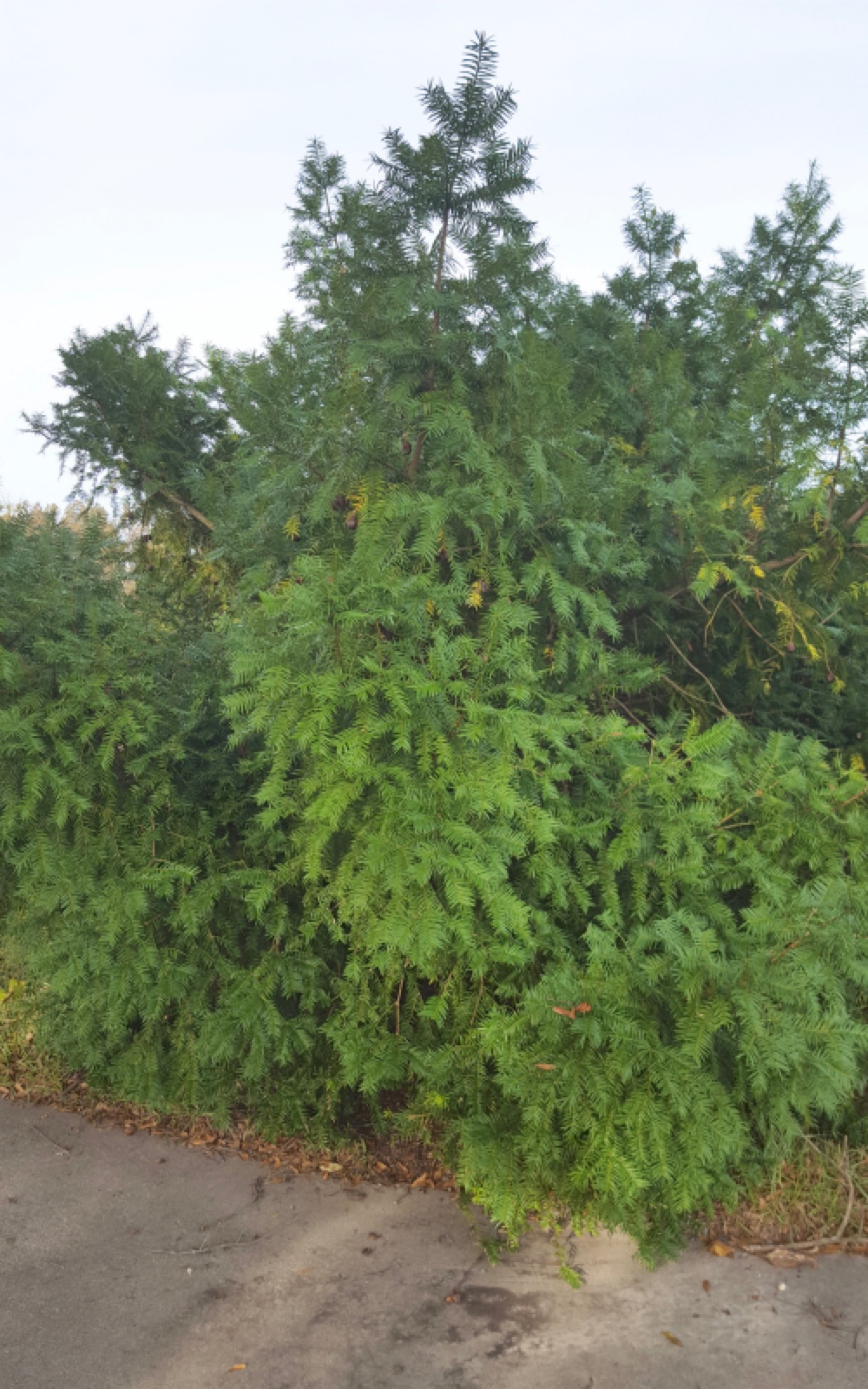
LEFT: Autumn 2013 • RIGHT: Autumn 2019
• JOE FACENDOLA collected 1,060 seeds at the pair of Mt Olive NC torreyas on 31 October 2020.
Access the full PHOTO ESSAY OF 2020 SEED COLLECTION at Mt. Olive. Photo-rich excerpts directly below:
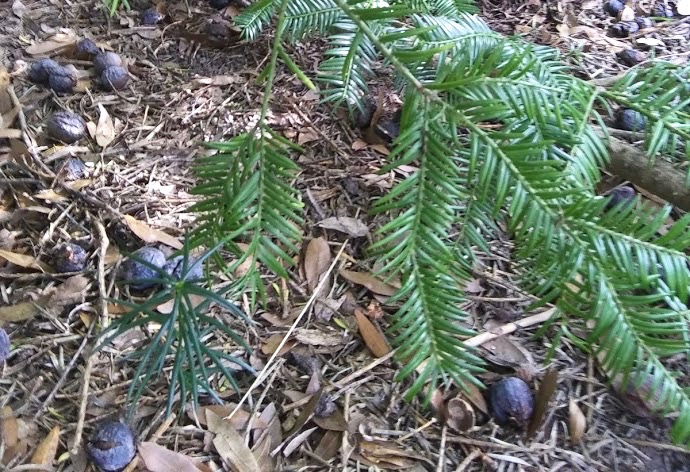 |
|
Three seedlings were found growing directly beneath the Mt. Olive trees, but they were not collected and are still onsite. UPDATE: See November 2021 report following, as Joe collected those three seedlings then.
One seedling is in the lower left of the adjacent photo.
The seedling has darker and longer leaves whorling around a single vertical stem. This indicates the first above-ground growth flush, as a second growth flush would then produce from 1 to 4 lateral branchlets.
Given the mowed lawn and the paved driveway, there was no opportunity for any seed that might have been carried away and buried by a squirrel to produce a seedling that could continue to grow.
|
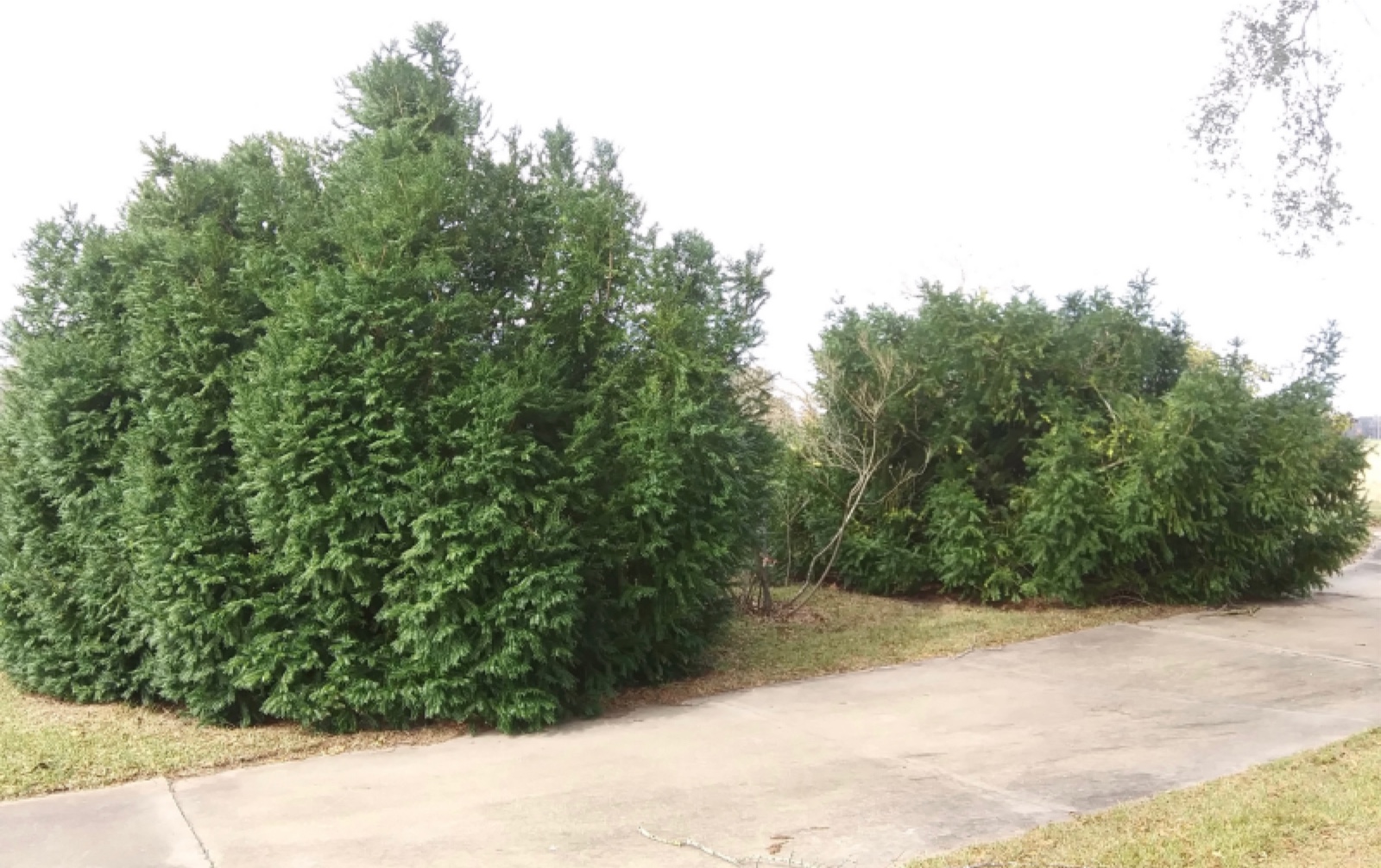 |
|
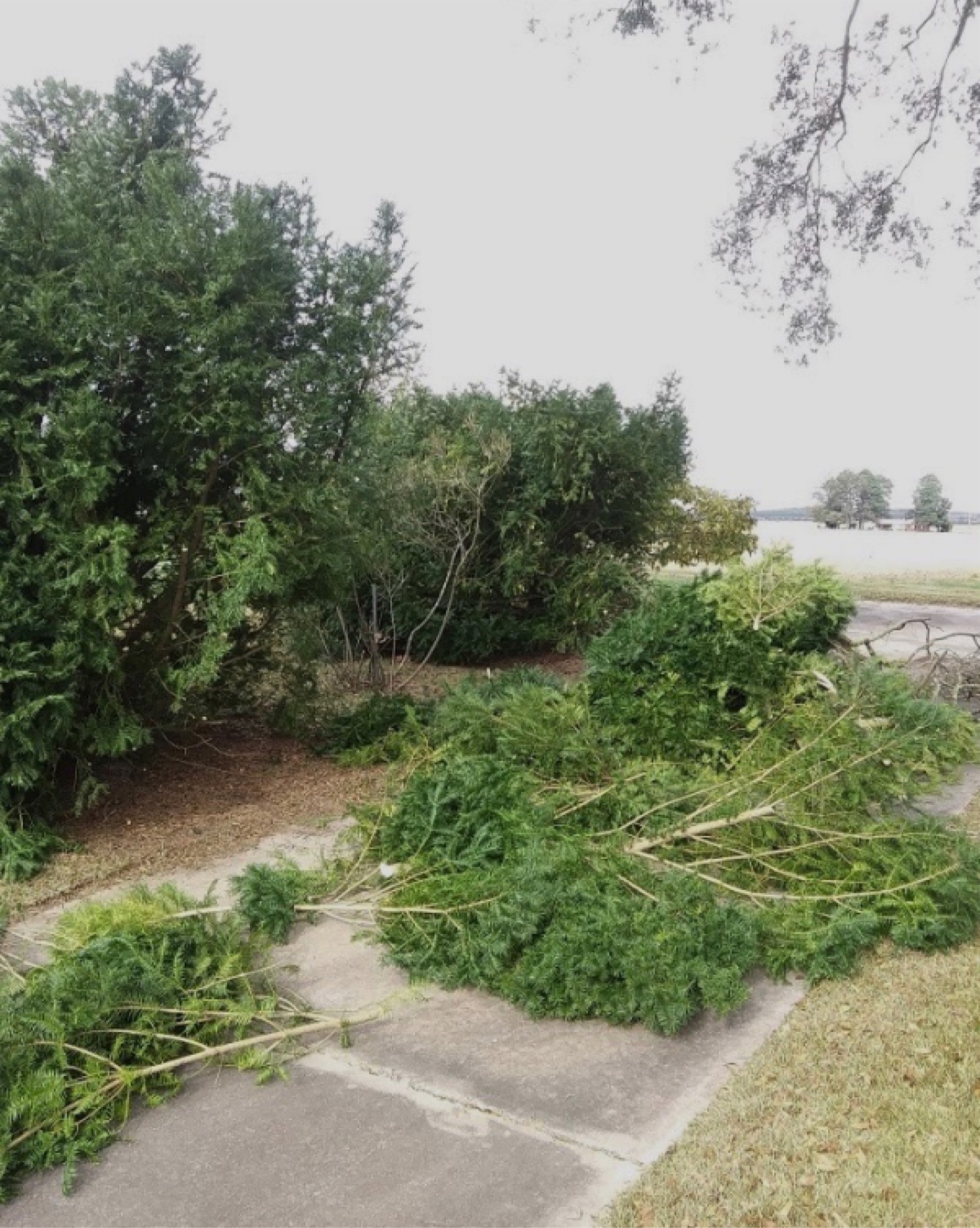 |
|
After seeds were collected, Mrs. Bullard guided Joe in pruning the driveway side of both torreyas.
Photos here show before and after pruning.
Mrs. Bullard also directed a "shape-up" with hedge trimmers of the sunnier side of the shorter, sprawling torreya.
|
• MOUNT OLIVE NOVEMBER 2021
• JOE FACENDOLA collected 1,480 seeds at the pair of Mt Olive NC torreyas on 7 November 2021. Joe reports that Mrs. Bullard authorized his collection of 3 small seedlings this year, as well.
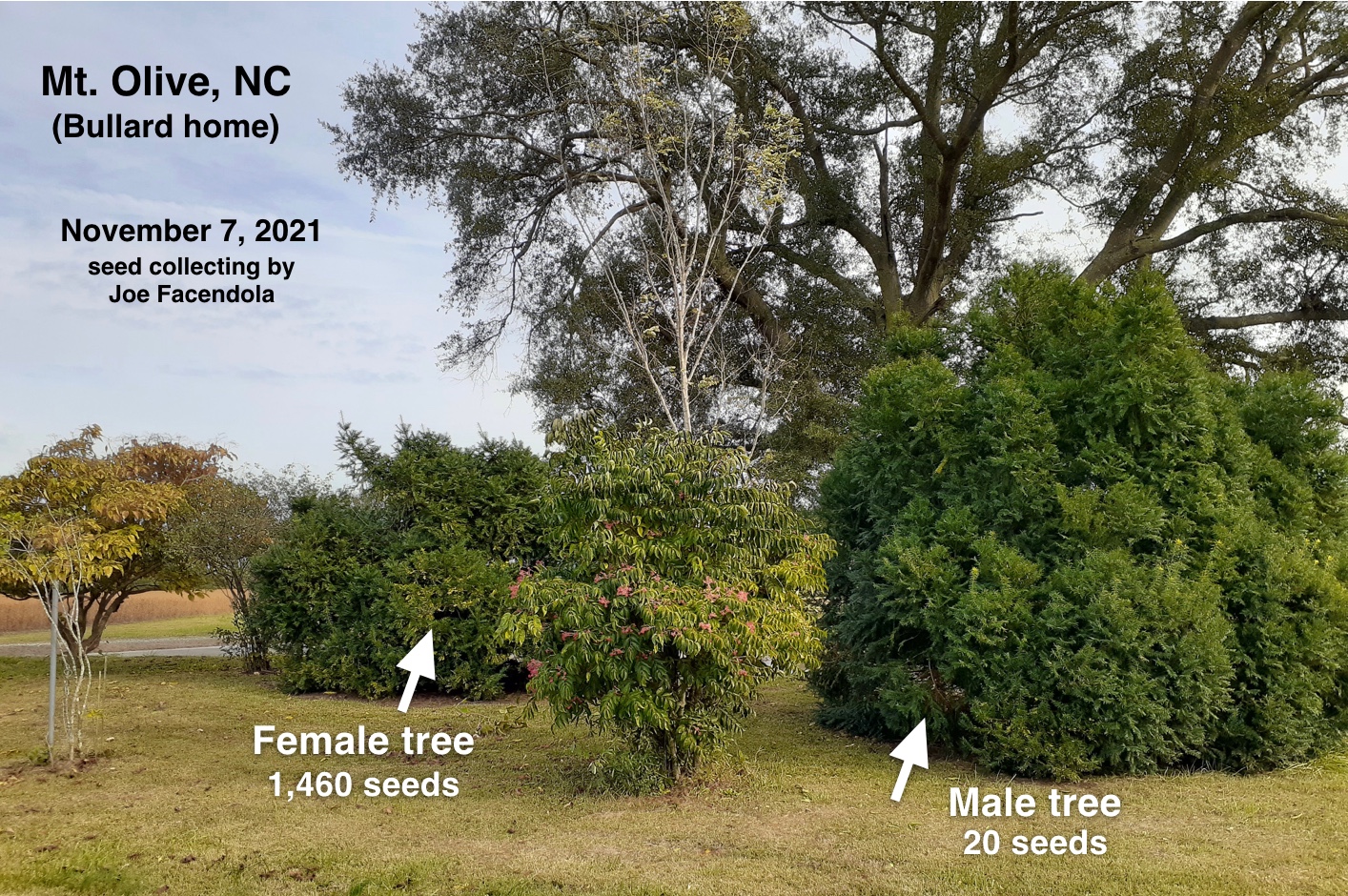
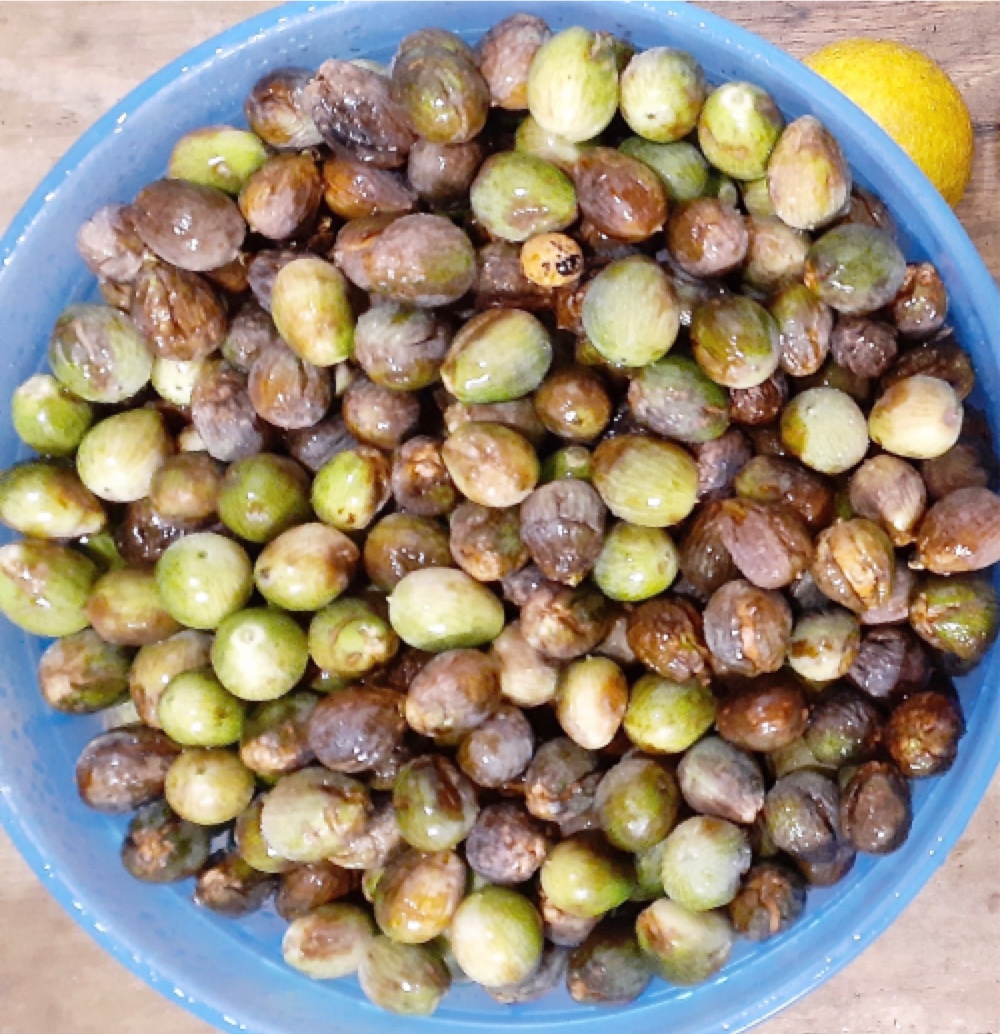
• MOUNT OLIVE SEPTEMBER 2022
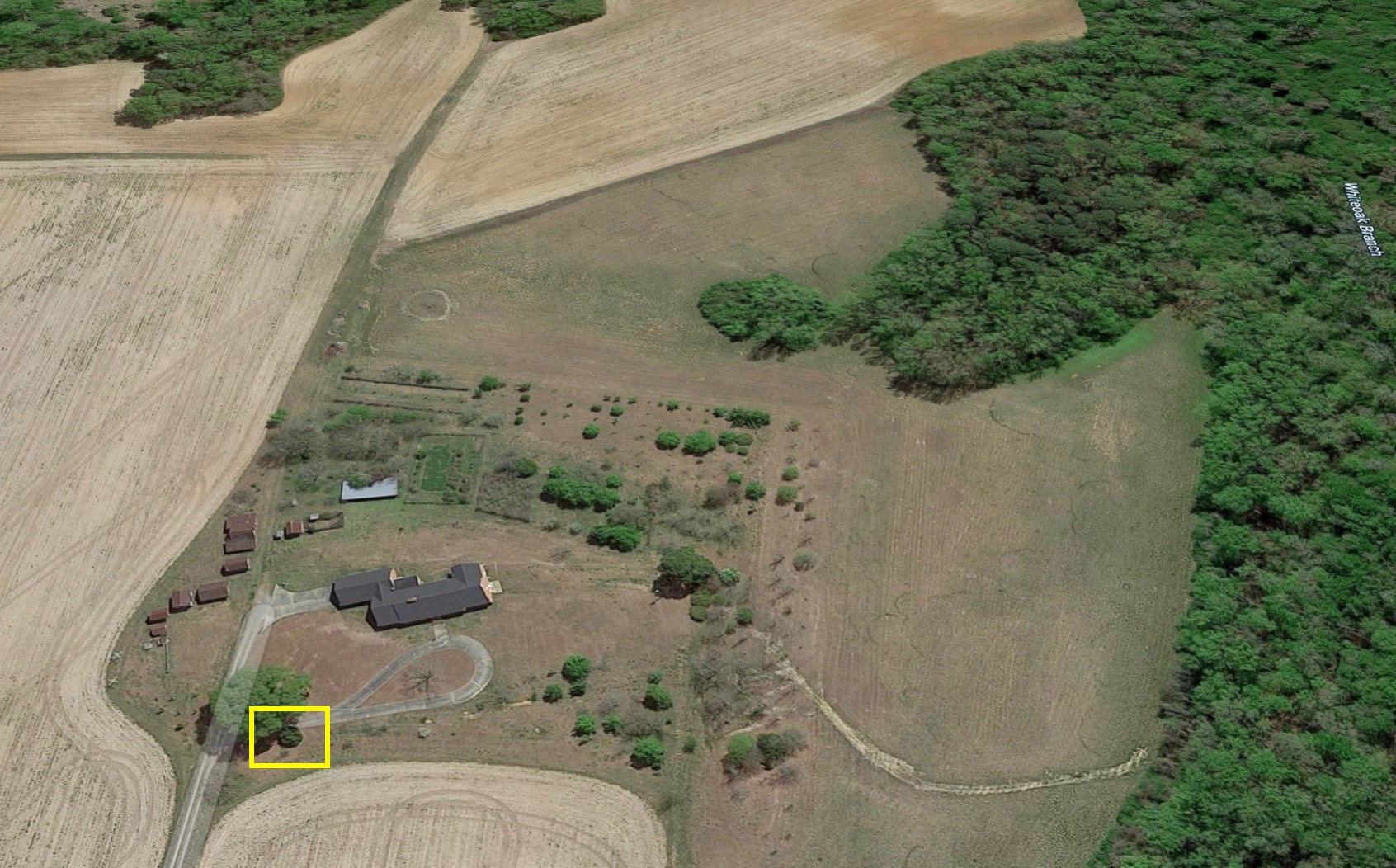
• Connie Barlow grabbed this aerial photo off of GOOGLE MAPS, using the "satellite" layer, for the address of the Bullard home. She then added the YELLOW SQUARE with the center being the MALE TORREYA and the Darlington Oak shading the smaller female Torreya. The image is labelled 2022 on Google maps. Good news is that a large forested area surrounds the agricultural lands, so Torreya will be able to launch a next-generation — with just a little bit of help from a human if seeds are intentionally carried to and planted amid the trees.
• MOUNT OLIVE NOVEMBER 2022
Our collector wrote:
TOTAL: 253 seeds collected from the Bullard trees. The smaller, leaderless tree (which is somewhat shaded by the neighborying oak) again provided the majority of the seeds. However, both trees did have seed still hanging in the branches. A small amount of seed was on the ground under both trees, but significantly less than last year.
Minimal sign of squirrels peeling and cracking the seeds under the trees, but they may have carried them all away? I saw ~15 squirrels while driving up the long driveway. Not much sign of acorns under the Darlington Oak, but they should have dropped a couple of weeks earlier (at least the one in my yard has).
Interestingly, the smaller, leaderless "female" tree that has provided the majority of the seed had many branchlets lined with pollen buds. I specifically took note of this. The other larger tree had very little sign of any future reproductive buds anywhere that I could easily see.
Both trees responded with vigorous growth on the driveway side, where they were heavily pruned last year.
Did the trees just not produce seed this year, or was it taken by the squirrel army? Perhaps the trimming last year removed many of the reproductive buds, or the tree just put more energy into re-growing than reproduction? Her yard-work guy did use a hedge trimmer on them last year....
This year I did remove some of the new growth that was on the driveway side, as well as did a half-hearted shape-up of the trees around the bottom. I really really struggled to trim as little as possible, while keeping Mrs. Bullard happy. Very little was removed from the side of the trees not facing the driveway. I just snipped a handful of errant branch tips that stuck out at the bottom. I would say I only removed about 1/10th of what was trimmed last year. We then turned our trimming attention to various other trees around the yard that were "too big".
I spent a lot of time chopping on various things around the yard, so did not take very many photos while there. She did give me a full tour of the arboretum, and she has so many various trees and shrubs [all planted by her late husband]. Truly a tree zoo! Another 5 seedlings were collected from this site at Mt. Olive.
• MOUNT OLIVE NOVEMBER 2023
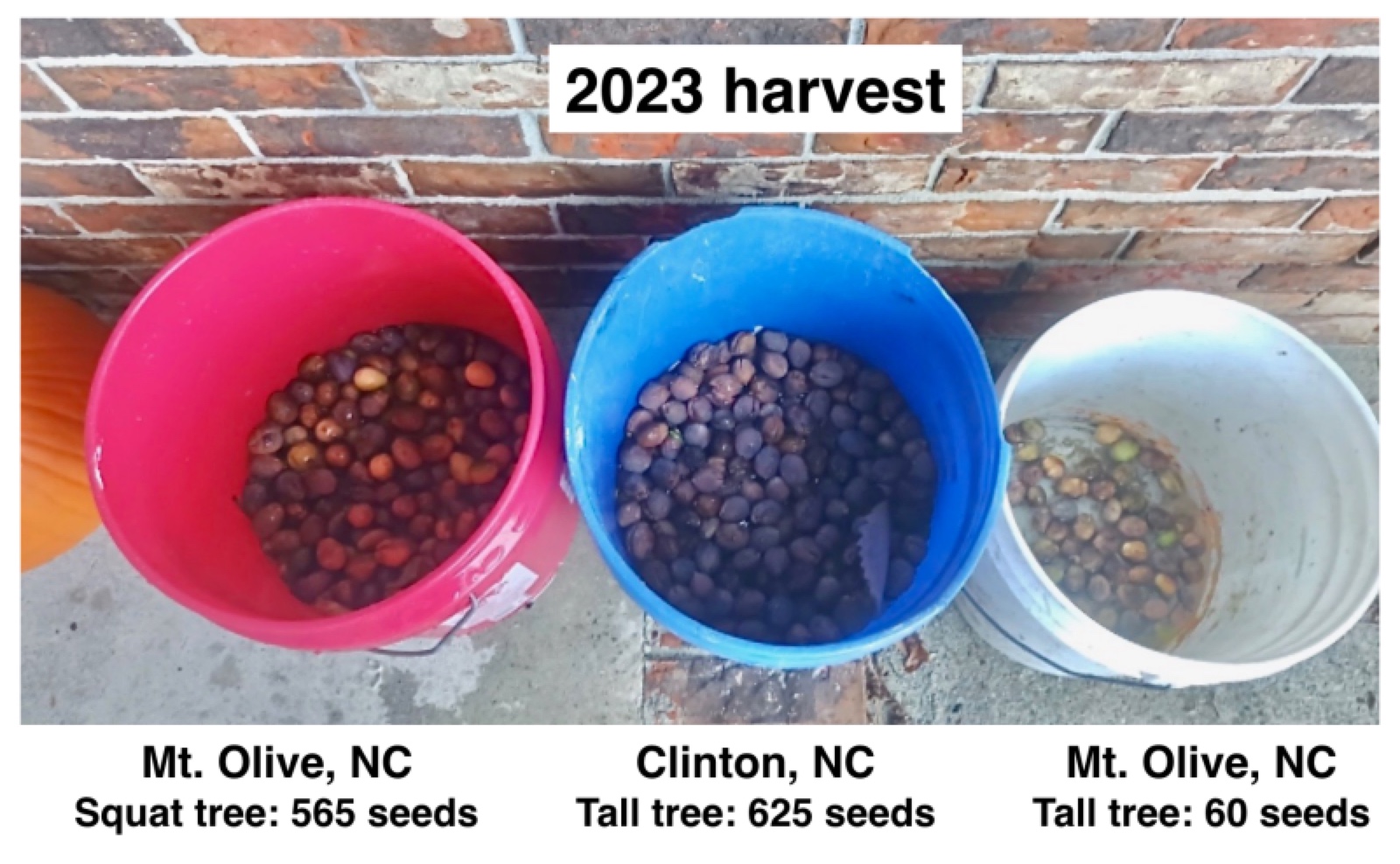
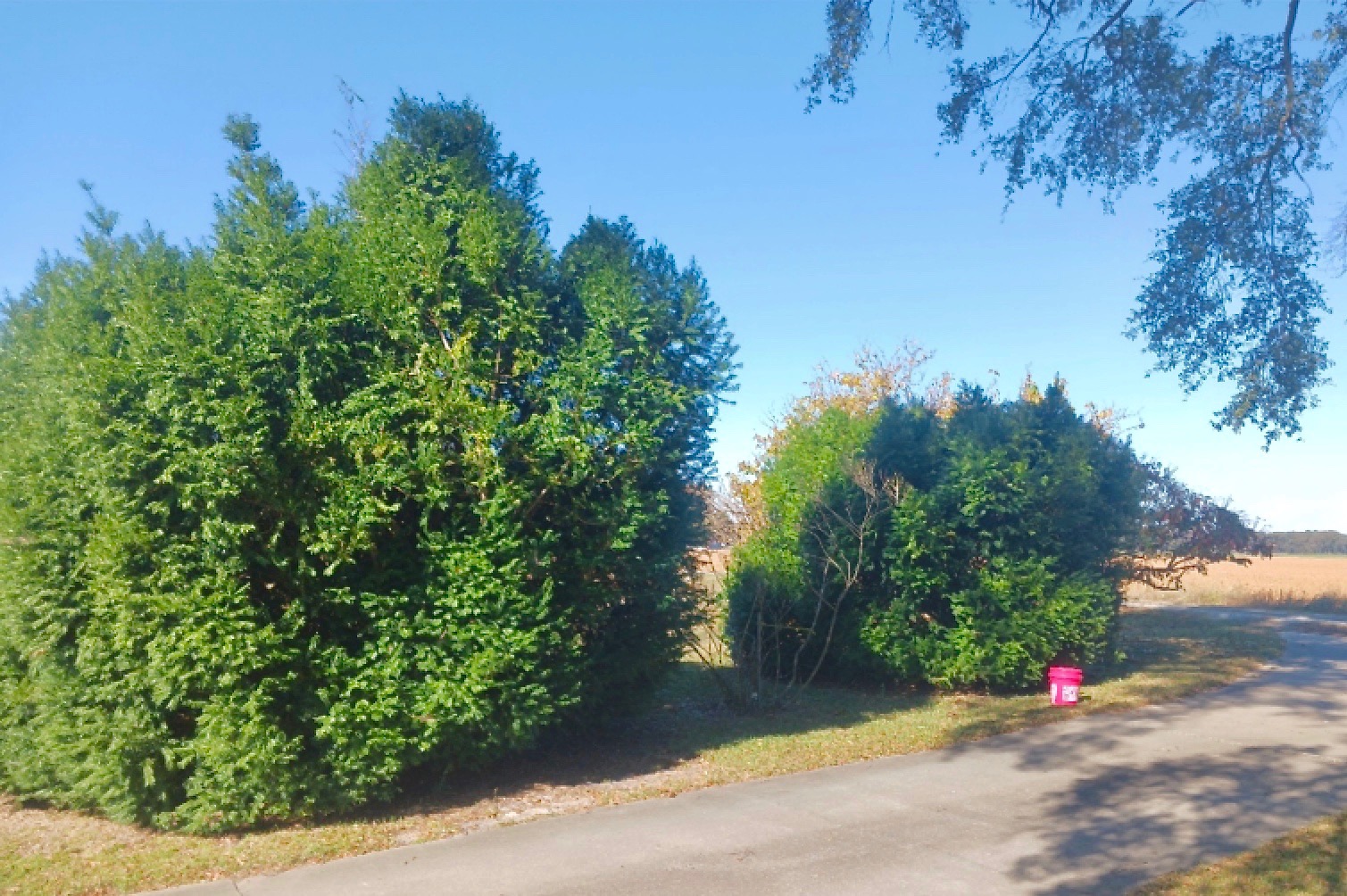 |
|
Our collector wrote:
... I did not trim the Torreya this year, as their branches were still fairly far from the driveway.
So all of the reproductive buds I saw are still on the trees for next year.
I did dig one seedling from under the squat tree, but none other were present near or far from the trees.
|
PHOTO ABOVE: The "squat" tree is located on the right, with the red bucket. The tall tree is located on the left. The tall tree produced 60 seeds, which were collected. There were very few female reproductive buds present on this tree, and no sign of male reproductive buds.
The squat tree continued to produce most of the seeds: about 565. There were many female reproductive buds present throughout the tree, and sections of the tree had large amounts of male buds, as well. It appears that while there are both male and female buds present on the same tree, individual larger limbs either produced male or female buds. These trees were not trimmed in 2023.
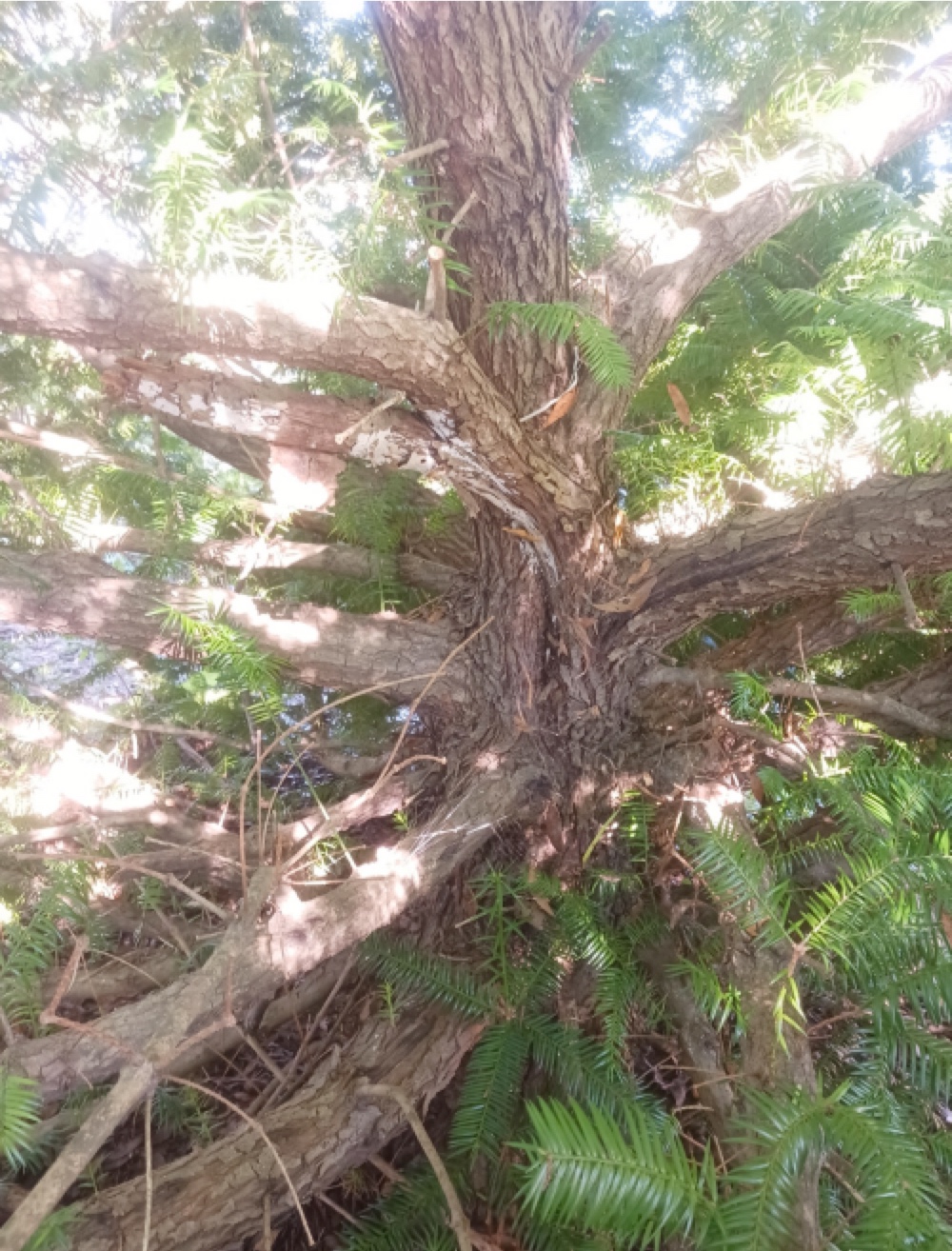

ABOVE LEFT: Lower part of Squat Tree shows it is a single stem (possibly a rooted branchlet), and so the existence of both male and female buds prove this genus is capable of producing both on the same tree — albeit seemingly favoring one sex or the other.
ABOVE RIGHT: This image reveals some trifold long vegetative buds at the tips of branchlets (see lowest area), plus long lines of smaller pollen buds much farther down the branchlet, as well as large, squarish female buds in sets of 5, just one node down from this year's new leaves. (Best view of the female group is near the center of the image.)
NOTE: JOE FACENDOLA had to move to Massachusetts, so Fall 2024 was his final year collecting seeds at Mt Olive and Clinton NC.
• MOUNT OLIVE NOVEMBER 2025 (seed collector Dijon Guite)
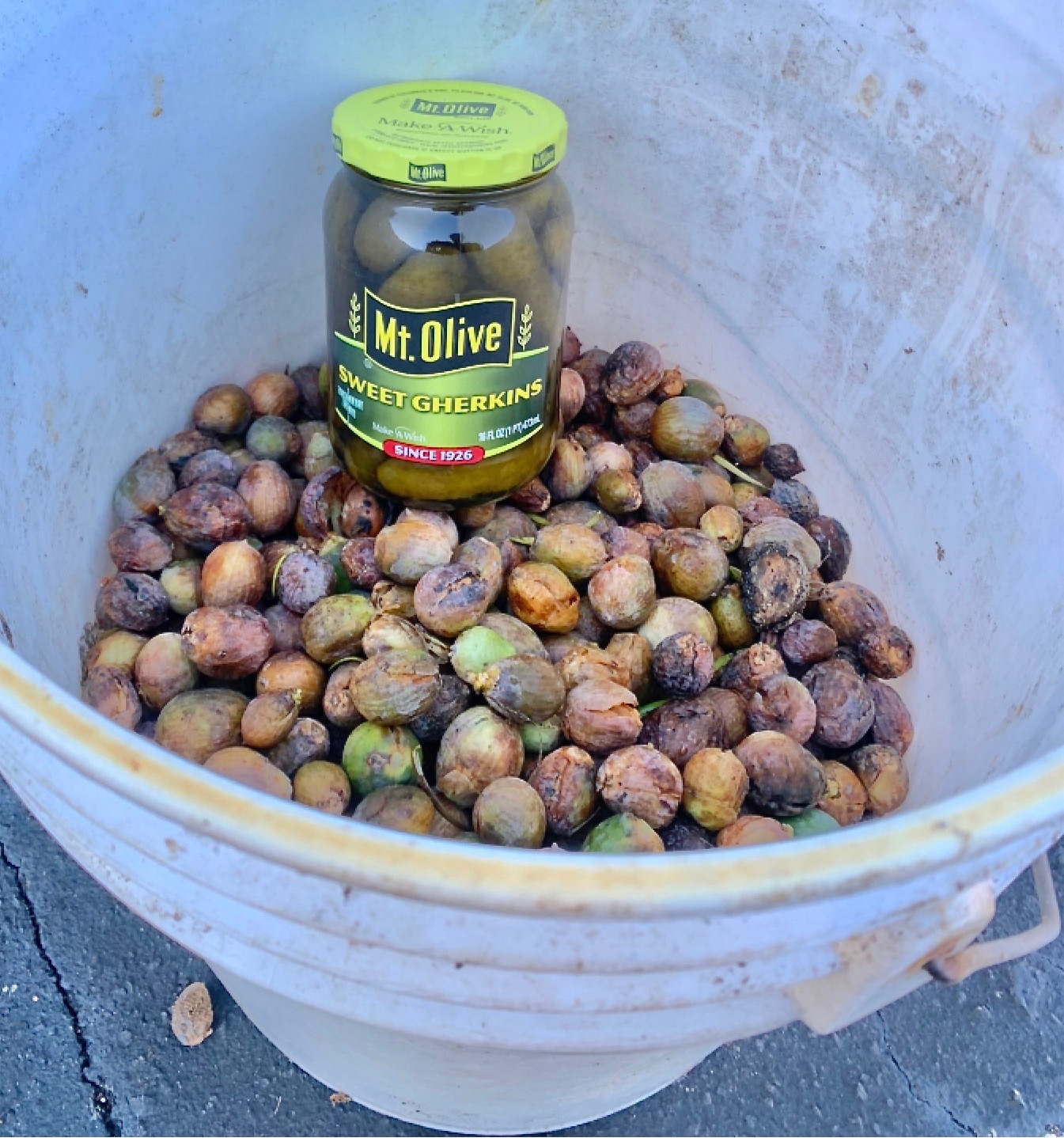 |
|
NOVEMBER 4, 2025: Dijon Guite wrote:
"I just did a quick count of the seeds from Mt. Olive. Mrs. Bullard & I collected about 1,000.
"Only about a literal handful of them came from the less productive tree.
"Strangely, I noticed only next year's male reproductive buds on either tree — no female buds as far as I could tell." |